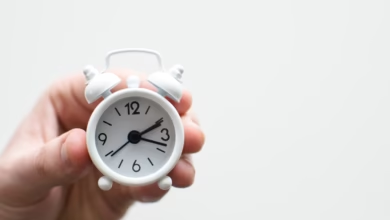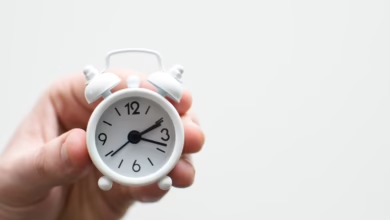Real Estate and Retirement: Strategies for Building Wealth, Downsizing Wisely, and Securing Your Future

As retirement approaches, individuals face the pivotal task of ensuring their financial security during their golden years. While traditional savings accounts and investment portfolios have long been staples of retirement planning, one asset class often stands out for its unique benefits: real estate. The tangible nature of property not only provides a potential for appreciation but also offers diverse avenues for generating income, making it a compelling consideration for those looking to enhance their retirement strategy. In this article, we will explore the multifaceted role of real estate in retirement planning, examining how it can build wealth, the strategic benefits of downsizing, and essential tips for navigating the market to secure a stable financial future. By understanding these elements, retirees can make informed decisions that align with their long-term goals and lifestyle aspirations.
- 1. **Building Wealth: How Real Estate Can Enhance Your Retirement Portfolio**
- 2. **Downsizing Decisions: Leveraging Property to Maximize Retirement Income**
- 3. **Navigating the Market: Tips for Investing in Real Estate for Retirement Security**
1. **Building Wealth: How Real Estate Can Enhance Your Retirement Portfolio**
Real estate can play a pivotal role in enhancing retirement portfolios, serving as both a wealth-building asset and a source of passive income. One of the primary advantages of investing in real estate is its potential for appreciation over time. Historically, property values tend to increase, often outpacing inflation and providing a hedge against the rising cost of living. This appreciation can significantly boost an individual's net worth, making real estate a valuable long-term investment.
Moreover, real estate can generate consistent cash flow through rental income. For retirees looking to supplement their pensions or savings, owning rental properties can provide a reliable source of monthly income. This income can help cover living expenses, healthcare costs, and other financial needs, allowing retirees to maintain their standard of living without depleting their savings too quickly.
Additionally, real estate investments can offer tax advantages. Many property owners benefit from deductions on mortgage interest, property taxes, and depreciation. These tax incentives can enhance overall returns and improve cash flow, making real estate an attractive option for retirement planning.
Investing in real estate can also diversify a retirement portfolio. By adding real estate to a mix of stocks, bonds, and other investments, retirees can reduce their overall risk and volatility. Real estate often behaves differently than traditional financial markets, providing a stabilizing effect during economic downturns.
In summary, incorporating real estate into retirement planning can enhance wealth-building strategies through appreciation, provide a steady income stream, offer tax benefits, and diversify investment portfolios. As individuals approach retirement, considering real estate as a key component of their financial strategy can lead to a more secure and prosperous future.
2. **Downsizing Decisions: Leveraging Property to Maximize Retirement Income**
As individuals approach retirement, many face the decision of whether to downsize their homes as a strategy to enhance their financial security in later years. Downsizing can provide a significant opportunity to leverage property assets in a way that maximizes retirement income and reduces overall expenses.
One of the primary motivations for downsizing is the potential equity locked in a larger family home. By selling a property that may have appreciated significantly over the years, retirees can free up capital that can be redirected into more income-generating investments or savings accounts. This influx of cash can help bolster retirement savings, provide additional funds for healthcare or leisure activities, or be allocated to travel and experiences that enhance quality of life during retirement.
Moreover, downsizing often leads to reduced costs associated with homeownership. Smaller homes typically come with lower property taxes, utility bills, and maintenance expenses. These savings can free up funds that retirees can use for essential living expenses or to enjoy their newfound leisure time. Additionally, moving to a more manageable space can alleviate the stress and physical demands of maintaining a larger home, allowing retirees to focus on their health and well-being.
Another aspect of downsizing is the opportunity to relocate to areas with a lower cost of living or more favorable climates. This flexibility can lead to significant financial benefits, as retirees may find that their retirement income stretches further in a different locale. Furthermore, some may choose to move to retirement communities that offer amenities and social opportunities, enhancing their overall quality of life while potentially lowering living costs compared to urban settings.
However, the decision to downsize should be approached with careful consideration. Retirees need to assess their housing needs, emotional attachments to their current home, and the potential impact on their social networks. Additionally, understanding the real estate market conditions is crucial to ensure that they achieve the best possible financial outcome from the sale of their property.
In summary, downsizing can be a powerful tool in retirement planning, providing retirees with the ability to unlock home equity, reduce living expenses, and enhance their overall financial flexibility. By making informed decisions about their housing situation, retirees can better position themselves for a comfortable and fulfilling retirement.
3. **Navigating the Market: Tips for Investing in Real Estate for Retirement Security**
Investing in real estate as part of your retirement planning can be a strategic way to build wealth and secure financial stability. However, navigating the real estate market requires careful consideration and a well-thought-out approach. Here are some essential tips to help you invest wisely and enhance your retirement security.
First, conduct thorough market research. Understanding local market trends, including property values, rental demand, and economic indicators, can help you make informed decisions. Pay attention to neighborhoods that are experiencing growth or development, as these areas may offer better potential for appreciation. Utilize resources such as real estate websites, local news, and economic reports to stay informed about shifts in the market.
Second, consider diversifying your real estate investments. Instead of putting all your funds into a single property, think about diversifying across different types of real estate—residential, commercial, or even real estate investment trusts (REITs). This strategy can mitigate risk, as it reduces your reliance on the performance of any one asset. Additionally, diversifying geographically can protect you from local economic downturns.
Third, assess your investment strategy based on your retirement timeline and risk tolerance. If your retirement is still years away, you might opt for a more aggressive approach, focusing on properties with higher growth potential. Conversely, if you are nearing retirement, consider more stable, income-generating properties that can provide a steady cash flow. Rental properties can be an excellent source of passive income, helping to supplement your retirement savings.
Lastly, seek professional advice when needed. Real estate investing can be complex, and enlisting the help of real estate agents, financial advisors, or property managers can provide valuable insights and alleviate some of the burdens associated with property management. Professionals can guide you through the buying process, help you understand market dynamics, and assist in tenant management, ultimately allowing you to focus on your long-term retirement goals.
By employing these strategies, you can navigate the real estate market more effectively and enhance your retirement security. Investing in real estate can be a powerful tool to build wealth, but it requires due diligence, strategic planning, and a clear understanding of your financial objectives.
In conclusion, real estate can serve as a powerful pillar in your retirement planning strategy, offering both wealth-building opportunities and avenues for income generation. By incorporating real estate into your retirement portfolio, you can enhance your overall financial security, taking advantage of appreciation and rental income. Downsizing can further optimize your assets, allowing you to unlock equity and reduce living expenses, creating a more comfortable retirement lifestyle. As you navigate the real estate market, informed decision-making and strategic investments are crucial to ensuring long-term stability and growth. With careful planning and a proactive approach, real estate can not only safeguard your retirement but also provide the freedom to enjoy the life you envision. As you embark on your retirement journey, consider how real estate can fit into your unique financial landscape, paving the way for a fulfilling and secure future.





